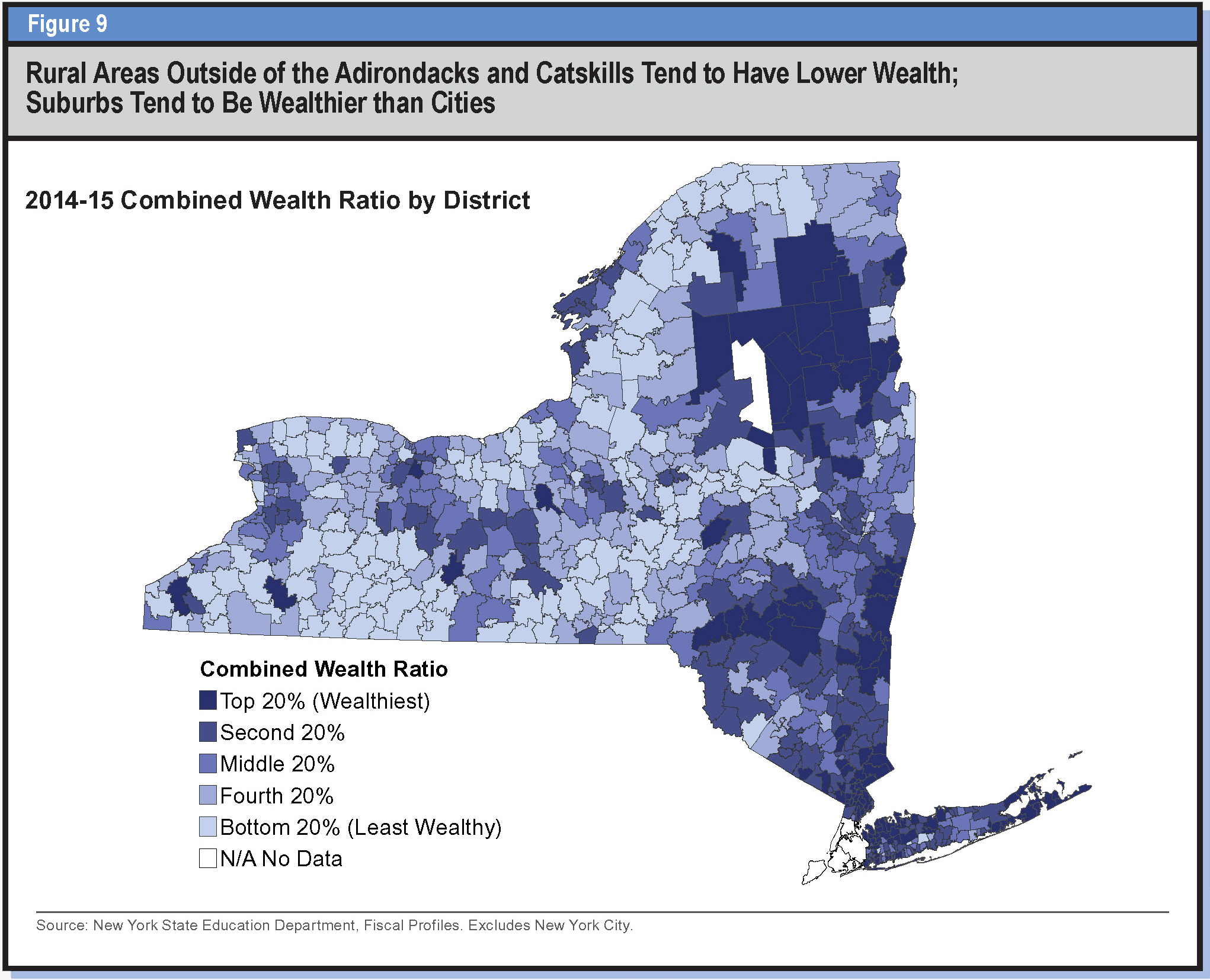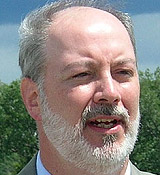School Aid Formula Says Adirondack Districts are Rich - Not Quite
Tuesday, March 14, 2017
By: John Sheehan - Adirondack Council Director of Communications
Our schools are an important part of our society, especially in the Adirondack Park. Schools are community centers where parents and other residents come to discuss community issues and support their kids’ academic, athletic and career goals. Regardless of their location, schools cost lots of money.
Each year at budget time, the State Legislature and Governor decide how much aid they will provide to school districts from the Bronx to Beaver River to Buffalo. Federal law requires states to provide equality in education, regardless of where a student lives. But big cities and wealthy suburbs often have more political clout than rural areas, since their populations are higher. Regardless of which political party is in charge, there is a constant struggle over how to define fairness in the school-aid formula for rural, urban and suburban districts.
Overall, New York school districts get $13 billion in state aid each year. Recently, NYS Comptroller Tom DiNapoli reviewed the levels of funding for each region of the state. He issued a report in February on school districts and per-pupil spending that makes some sense of the raw numbers. A copy of the report can be found HERE.
If you pay school taxes in the Adirondack Park, you may wonder how the state’s aid program affects what you pay. New York’s formula for determining how much state aid local school districts deserve is complicated and it treats the Adirondack Park in an unusual way.

click to enlarge mapUnlike most rural school districts around the state, the state’s aid formula treats the Adirondack Park’s school districts like they were wealthy suburban districts. A map of the wealthiest districts in the state shows most of the Adirondack Park’s districts are in the top 20 percent – along with the Catskill Park, Mid-Hudson Valley, Long Island and parts of the Finger Lakes.
How can that be when we know year-round incomes are generally lower in rural areas than in cities or suburbs? Why do North Country school districts spend more money? Because non-labor costs are higher in North Country schools than in anywhere else in the state.
This report shows that Adirondack school districts are considered among the state’s wealthiest when evaluating per-pupil spending because the Legislature looks at a combination of both property values and income when assessing how much state aid each school needs. The Park has a high number of second homes that are worth a lot of money compared with homes in other rural areas of the state. It also has very few students enrolled in the districts.
Thus, the ratio of high property values plus income, divided by a small number of students, makes Adirondack school districts appear to be wealthy – despite the fact that most of the year-round families, whose children are enrolled, aren’t wealthy.
Just as important is the fact that North Country school districts don’t rely as much on property taxpayers as the rest of the state.
| Most of the rest of the statistics presented by the Comptroller are expressed as charts and list only “North Country,” without differentiating between in-Park and out-of-Park districts. Still, there is some eye-opening data to consider: |
- Second homes count -- The Adirondack Park has higher incomes and more valuable property than the rural areas around it, owing to the higher levels of investment to be near protected lands, as well as the higher percentage of second-home owners and large timberland holdings. Rural North Country districts outside the Park are among the poorest districts in the state;
- North Country schools use the least property tax – these districts get less of their total revenue from property taxes than any other region, at 32.2 percent. That compares to 67.7 percent for Long Island and 65.5 percent for the Mid-Hudson region. The statewide average is 54.5 percent;
- The region around the Adirondack Park is poor -- Almost 75 percent of all North Country students live in districts that are among the state’s poorest (bottom 40 percent). This includes upstate cities such as Watertown, Plattsburgh, Glens Falls and Ogdensburg as well as rural areas outside the Park;
- Park districts are the North Country exception -- Only 13 percent of all North Country students live in districts where incomes are among the top 40 percent. Nearly all of those districts are inside the Adirondack Park. In contrast, more than 60 percent of Long Island and Mid-Hudson students live in the wealthiest districts;
- Poverty is a common problem -- Half of North Country students are eligible for free school lunches; 24 percent live below the federal poverty standard;
- Spending per pupil looks normal here – North Country schools spend an average of $21,354 per pupil. The state average is $22,658. Mid-Hudson districts spend the most, at $26,636. Western NY spends the least, at $19,776;
|
- Labor costs are low here – Labor costs are lowest in North Country districts, including the Adirondacks;
- Spending per student is actually high here – If all districts paid the same low labor costs that North Country districts do, North Country districts would spend the most money per student in the state. Salary-adjusted spending per student was $21,354 in the North Country compared to $17,586 on Long Island;
- Military or Job – North Country students are the most likely to enter the military or employment (26 percent) rather than college (NYS average was 16 percent); and among the least likely to go to college (73 percent go for two or four years versus statewide average of 84 percent);
- North Country students stay in school -- The high school dropout rate (2.3 percent) is among the lowest in the state and is lower than all surrounding rural regions;
- North Country students are safe -- They are among the least likely in the state to suffer injury from violence at school;
- Buildings repaired rapidly – In 2010, 37 percent of North Country school academic buildings were considered to be in poor condition; now, fewer than 7 percent are in poor condition. The statewide average was 32 percent in 2010 and 14 percent now; and,
- Every region of the state has experienced a decline in student population over the past decade, ranging from 0.5 percent in the Long Island and the Mid-Hudson areas to 1.5 percent in the Southern Tier. The North Country decline is 1.1 percent; the statewide average is 0.7 percent.
|
| Increased economic opportunity and migration would help reduce the cost of educating North Country students generally, both inside and outside of the Adirondack Park. Migration would bring more students and decrease the total costs per pupil, while spreading those costs over a larger number of taxpayers. |
|
Would you like to comment on what you've read or viewed? We'd love to hear from you. Please click to send us a message.

For the past 25 years, John has been the voice of the Adirondack Council on radio and television, and on the pages of local, regional and national media. John develops and executes the Council’s public relations and communications programs.
He works with the media to explain the unique nature of the Adirondack Park and to help the public understand the Council’s efforts to sustain its clean air, wilderness, wildlife, clean water and vibrant communities. He is the principal author of our annual State of the Park Report and assists with the editing of all Council publications.
Born in Troy, NY, John Sheehan is a graduate of Catholic Central High School and the State University at Albany. Today, John and his wife Deborah live in Albany and have a family camp in the Adirondacks. Their daughter Hannah attends Clarkson University.
|
|
|
« Back to Blog







